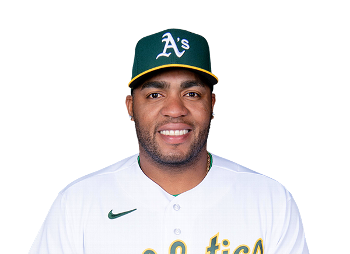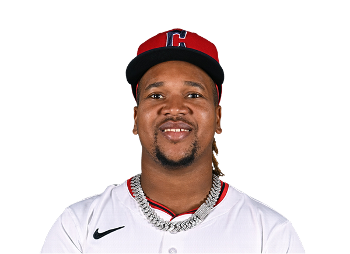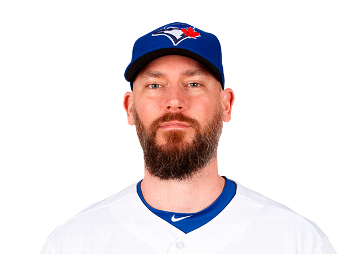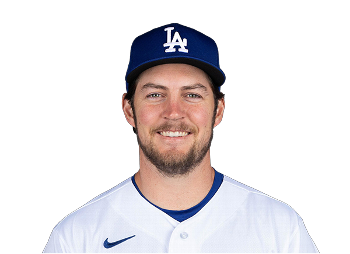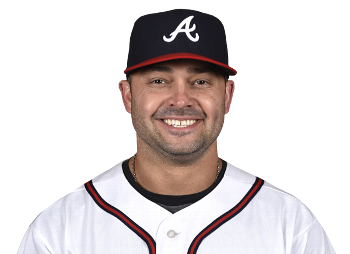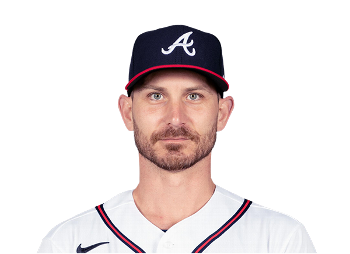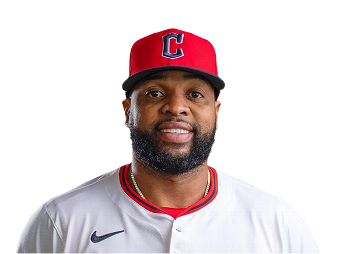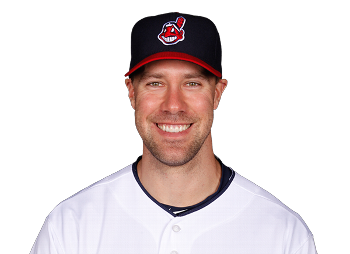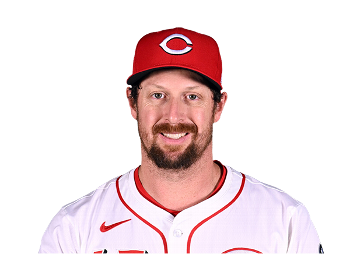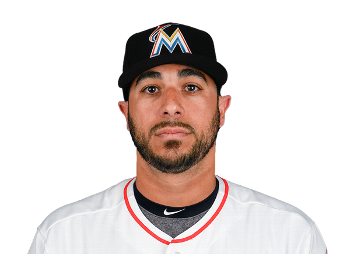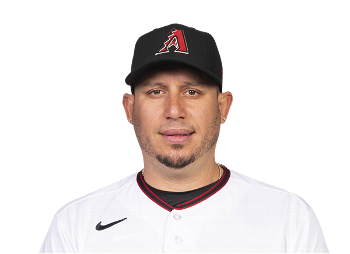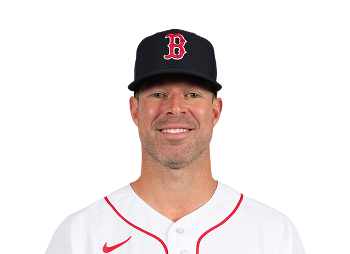Corey Kluber (Photo: Baseball News Source)
Ranking the 2014 Cleveland Indians roster at the quarter mark
Brantley's power surge, Kluber's dominance lead the way a fourth of the way through the season
By Jim Piascik
May 16, 2014
Follow on Twitter
Share via: Share: Facebook Share: Twitter Share: Google Share: Pinterest Share: Print Share: Email
The 2014 season has been a comedown for Cleveland so far as the team has been below .500 after making the playoffs in 2013. As always there have been highs and lows for the team, but overall the team has gotten a few more negatives than positives.
These rankings represent a snapshot of each player's performance to date, meaning there are some people ranked higher who will regress down as the season goes on and vice versa. Players with more playing time are typically given some preference to those with less, which is why Greg Kottaras is not #1.
#33 Elliot Johnson, INF/OF (Previous Rank: 24)
Johnson's calling card is his versatility, as he needs that defense to carry his bat. But with some issues in the field -- highlighted by two errors the day before he was designated for assignment -- and Johnson's poor hitting sealed his fate, at least for now. Johnson is currently playing in Columbus.
#32 Jason Giambi, DH (Previous Rank: NR)
Cleveland's player-coach only managed to play four games so far in 2014 due to an rib injury at the beginning of the season and a calf injury more recently. Some of that is old age, but it is also using the disabled list as a way to manipulate the roster to keep Giambi around.
Jesus Aguilar (Photo: ESPN)#31 Jesus Aguilar, DH (Previous Rank: NR)
With only one major league game under his belt, it is impossible to really do anything with this ranking. If Aguilar sticks around in the majors, however, we will get a much better idea of how his .298/.395/.519 line in Columbus will translate to Cleveland.
#30 Vinnie Pestano, RHP (Previous Rank: 22)
Much like 2013, Pestano has been a shell of his former self so far in 2014. The right-hander only got 2.2 innings with the big league team, allowing six runs (four earned) in that time before being sent down to Columbus. Pestano has been better in Columbus (3.65 ERA, 1.60 FIP in 12.1 innings) as he tries to work his way back to Cleveland.
#29 Blake Wood, RHP (Previous Rank: 25)
Wood continues to have a big-time fastball, though he did not find much success with it during his brief time in Cleveland this year (7.11 ERA, 4.68 FIP in 6.1 innings). The issue for Wood was walks, as the right-hander walked as many (six) as he struck out before heading down to Columbus. Wood has not been much better in Columbus, as he has walked nine in 4.1 Triple-A innings.
Jose Ramirez (Photo: ESPN)#28 Jose Ramirez, INF (Previous Rank: NR)
The switch-hitting Ramirez was supposed to get a lot of time at second base while Jason Kipnis is on the disabled list. Ramirez has only played a handful of games, however, as the combination of his early struggles and Mike Aviles' hot streak left Ramirez on the bench. Ramirez is better than this, though he may not get the time right now to show it.
#27 George Kottaras, C (Previous Rank: NR)
Kottaras was only in Cleveland for one game, but he definitely made an impression in that limited time. With two home runs in a game while Yan Gomes was on paternity leave, Kottaras played a key role in putting Cleveland in position to win on May 4, until the next entry on this list blew the save.
John Axford (Photo: ESPN)#26 John Axford, RHP (Previous Rank: 18)
Really, expecting Axford to step into the closer's role set the right-hander up to fail. Axford has not been the same since 2011 and his 2014 has seen the right-hander combine the drop in strikeouts he showed in 2013 with the increase in walks he showed in 2012. It is likely that Axford is better than this, but letting him try to right the ship out of the closer's role is a good idea.
#25 Carlos Carrasco, RHP (Previous Rank: 17)
The strange case of Carrasco continues, as the right-hander actually has pretty decent peripherals this season despite his poor ERA (6.26 ERA, 3.64 FIP in 27.1 innings). Yet his performance lagged behind his peripherals so far in his major league career and the team removed him from the rotation at the end of April. It looks like if the 27-year-old Carrasco will stick in the majors he will need to do it as a reliever.
#24 Ryan Raburn, OF (Previous Rank: 16)
Raburn's BABIP and isolated power in his terrible 2012 season: .224 and .083 respectively. Then, Raburn's BABIP and isolated power in his amazing 2013 season: .311 and .272 respectively. Finally, Raburn's BABIP and isolated power this season: .236 and .042 respectively. If Raburn ever stops being at these extremes he will be a decent, complementary player. Or, until then, we can just bet on the bounce back season coming in 2015.
Trevor Bauer (Photo: ESPN)#23 Trevor Bauer, RHP (Previous Rank: NR)
It was only one start, but Bauer already made a much better impression than he did in his rough 2013 season. It looks like 2013 was just a blip on the radar as Bauer regained his velocity and got back to limiting his walks. That lethal combination should have the right-hander back in the majors soon enough.
#22 C.C. Lee, RHP (Previous Rank: NR)
Lee has not gotten much time at the major league level yet, but the right-hander is showing why he is one of the best relief prospects in the organization. With a 9:2 SO:BB in 10.0 innings, Lee has done a good job showing his value to the big league team. Lee is not a high-profile back-end arm, but the right-hander is doing well in the middle innings.
#21 Josh Outman, LHP (Previous Rank: 20)
Though Outman is struggling to limit his walks so far in 2014, the left-hander has managed to limit the production of left-handed hitters. As the second lefty in the bullpen, that is really Outman's real job. Outman should beware, however, as Akron RubberDucks left-hander Kyle Crockett has quickly moved through the system and could make his way to Cleveland in the near future.
#20 Nick Swisher, 1B (Previous Rank: 9)
Nick Swisher (Photo: ESPN)If you look at Swisher's strikeout and walk rates, they are practically identical from last year to this year. Yet a significant drop in BABIP -- which should bounce back -- and isolated power -- which may or may not bounce back -- have dropped Swisher to significantly below replacement level. Swisher has a 77 wRC+ this season, but only has one season below a 100 wRC+ in his career; it has been bad, but Swisher will likely rebound at least a little soon enough.
#19 Michael Bourn, OF (Previous Rank: NR)
In addition to still dealing with some hamstring issues, the drop in walks and rise in strikeouts for Bourn in 2014 dropped the outfielder's offense to one of the worst marks of his career. Plus, Bourn has seen his defense dip again this season, rating out more as average than excellent. That combination puts Bourn squarely at replacement level and the center fielder will need to improve both to get back to being productive.
#18 Danny Salazar, RHP (Previous Rank: 5)
Following his electric debut in 2013, we probably should have expected Salazar to go through some growing pains this year. He is still getting strikeouts and doing a good job of limiting walks, but as a power pitcher, Salazar is still susceptible to leaving the ball up -- leading to home runs -- and succumbing to the big inning. He is better than his 5.53 ERA indicates, but with a 4.67 FIP, Salazar may need some time in Triple-A to straighten himself out.
Josh Tomlin (Photo: ESPN)#17 Josh Tomlin, RHP (Previous Rank: NR)
In his first two major league starts, Tomlin did what he always does: not strike out many hitters, walk even fewer, and eat innings. That combination makes Tomlin the ideal fifth starter, as he does a great job of giving the team innings and saving the bullpen. No one should mistake him as more than a back-of-the-rotation starter -- he is not Greg Maddux, who was flat-out dominant during the high of the steroid era -- but Tomlin is very good at what he does.
#16 Marc Rzepczynski, LHP (Previous Rank: 19)
Rzepczynski owns a 6:6 SO:BB in 7.1 innings against right-handed batters, but that is not what the left-hander does best. The left-hander has neutralized left-handed batters all season and remains a great LOOGY option for Terry Francona out of the bullpen. Rzepczynski is best used in that role at this point, though giving the sinkerballing lefty more time to develop against right-handed batters could pay off down the road.
#15 Nyjer Morgan, OF (Previous Rank: 21)
Like Bourn, Morgan has not rated out well defensively in 2014. Unlike Bourn, however, Morgan hit during his time in the majors and carved out a place on the big league roster. Interestingly, Morgan posted a 50 wRC+ in the minors this season compared to a 150 wRC+ in the majors, results that probably show the high-end and low-end of his abilities. The real Morgan likely ends up in the middle of those results and that version of the outfielder is one that can help the team off the bench (once he gets healthy).
Carlos Santana (Photo: ESPN)#14 Carlos Santana, 3B/C/1B (Previous Rank: 2)
In a way, the fact that Santana made it to replacement level with a .170 BABIP is impressive. Santana will always have his strikeouts, but walking as much as he does has left his on-base percentage at a decent enough figure despite the terrible, unsustainable low BABIP. Plus, Santana is playing passably at third base -- well enough to keep getting time there -- and should get better with more experience. It has not been a pretty season for Santana, but it should just be the prelude to better things.
#13 Scott Atchison, RHP (Previous Rank: 23)
At 38 years old, Atchison is still going strong as he has limited his walks, piled up groundballs, and struck out a decent number of hitters in 2014. He is not overpowering, but the right-hander is still getting results thanks to his nice mix of fastballs, sliders, and changeups. Atchison will not be this good all season -- that .200 BABIP just is not sustainable -- but like Lee, Atchison is a key middle reliever for the team.
#12 Jason Kipnis, 2B (Previous Rank: 1)
Before going out with an oblique injury, Kipnis showed some interesting changes at the plate. The second baseman had more walks than strikeouts while also maintaining the power jump he gained in 2013. Kipnis' offense would have looked even better if his BABIP was not .250, and if he continues this newfound approach at the plate as the BABIP rises, he will be even better than he was in his All-Star season. The second baseman is already one of the better players in baseball but could be finding another gear in his third full season in the majors.
David Murphy (Photo: ESPN)#11 David Murphy, OF (Previous Rank: 12)
After posting a .227 BABIP in 2013, Murphy saw that regress toward the mean in 2014. That regression up to .302 this season reestablished Murphy as an above-average hitter and made his signing look like a good one for the team. That BABIP mark goes all the way up to .342 when Murphy faces left-handers -- along with a 147 wRC+ -- and the outfielder has continued to solidify his reputation as a platoon bat with a 68 wRC+ against right-handers this year.
#10 Lonnie Chisenhall, 3B (Previous Rank: 11)
Some of Chisenhall's success this season is the .455 BABIP and only having two of his 94 plate appearances come against left-handers. But even if Chisenhall is benefiting from being deployed as a platoon bat, he gets credit for taking advantage of it. While Chisenhall's BABIP will regress, this season's hot streak allowed his career BABIP -- which was always low -- to reach a normal level. Now with an average 99 wRC+ and .160 isolated power in his career, Chisenhall is proving to be a serviceable major league hitter.
#9 Cody Allen, RHP (Previous Rank: 13)
Following last season's breakout, Allen picked up right where he left off with a top-level fWAR among relievers. Time will tell if Allen can maintain his increase and strikeouts and decrease in walks, but as it is, the right-hander is simply dominating. Through his first 115.1 innings, Allen owns a 1.6 fWAR and 2.3 rWAR, stats that really make him stand out. Allen is not the official closer now that Axford has been removed from the role, but he will get plenty of shots in the ninth inning.
Bryan Shaw (Photo: ESPN)#8 Bryan Shaw, RHP (Previous Rank: 15)
One reason Allen will not get all of the save opportunities is because Shaw has been more dominant in 2014. Shaw does not strike as many as batters out as Allen, but he walks even fewer and benefited from a low BABIP this season. Obviously that is not entirely sustainable, but even with a little regression, Shaw will be a very good reliever. He already has two saves this season after coming into the season with three and has a good chance at gaining more.
#7 Justin Masterson, RHP (Previous Rank: 4)
Though Masterson has not been perfect this season -- as you can see by his 4.31 ERA -- but his 3.68 FIP and 3.47 xFIP point to a player with some positive regression coming his way. The right-hander is still walking a few batters too many, but by maintaining the jump in strikeouts he enjoyed in 2013, Masterson is able to overcome it. Masterson is not your typical top-of-the-rotation ace, but overall, he is someone that can pitch at the top of the Cleveland staff.
Mike Aviles (Photo: ESPN)#6 Mike Aviles, INF/OF (Previous Rank: 14)
After three seasons with a wRC+ in the 80-range, largely thanks to BABIPs in the .270 neighborhood, Aviles is up to a 106 wRC+ as he plays significant time filling in for Kipnis. Aviles' BABIP is actually up to .313 -- the highest for Aviles since his debut season in 2008 -- and everything about the utility man's past tells us it will fall. Once that starts regressing down, Aviles' offense will look more like it has in the past. But while Aviles will regress, he is doing quite well right now.
#5 Zach McAllister, RHP (Previous Rank: 10)
So far in 2014, McAllister has been the beneficiary of a rock bottom 1.9 percent home run per fly ball rate, a figure that tends to regress toward 10.5 percent as the season goes on. Considering McAllister is not much of a groundball pitcher, that regression will hurt a little more and hurt his 3.89 ERA. In theory, McAllister's 3.90 xFIP -- the stat that corrects for home run per fly ball rate -- would mean his results are right in line with his peripherals, but Fangraphs' Tony Blengino has found McAllister gives up more hard contact than normal and just underperforms those peripherals. If that keeps up, McAllister could be in line for a higher ERA than expected going forward.
Asdrubal Cabrera (Photo: ESPN)#4 Asdrubal Cabrera, SS (Previous Rank: 8)
It may not seem like it at times, but Cabrera is all the way back to his 2011-12 All-Star form and doing pretty well in 2014. Cabrera never rated out well defensively, but so far in 2014, he actually is coming out only slightly below-average at shortstop. Combined with a decrease in strikeouts and an increase in walks, Cabrera is on pace for around a 4.0-WAR season. He may not be the future of the position, but for 2014, Cleveland could do a lot worse than Cabrera.
#3 Yan Gomes, C (Previous Rank: 3)
Gomes may have developed a tendency to throw the ball into the outfield, but overall, his defense still rates out around average. Plus, while Gomes has seen some BABIP regression and struck out more this year, he is still producing at an above-average level. Above-average offense with average defense from a catcher is tremendous, and while Gomes may have fallen back from his torrid 2013 season, he is still one of the most valuable players on the roster.
#2 Michael Brantley, OF (Previous Rank: 7)
Brantley currently has a BABIP significantly lower than his career mark, yet the outfielder is also posting a well above-average wRC+ for the first time in his career. A power surge for Brantley, including seven home runs and a .204 isolated power, has the outfielder hitting like a prototypical corner outfielder while also doing the typical Brantley things with strikeouts and walks. The metrics still do not love his defense, but this edition of Brantley at the plate more than makes up for it.
#1 Corey Kluber, RHP (Previous Rank: 6)
JCorey Kluber (Photo: ESPN)ust like McAllister, Kluber has shown an inability to pitch up to his peripherals throughout his career, a trend that is reoccurring in 2014. A 2.23 FIP is the basis for Kluber's 2.0 fWAR, but since fWAR is based on peripherals, the right-hander's 3.38 ERA and 1.0 rWAR could be more applicable. But even if Kluber never pitches quite like the ace his peripherals say he should be, the right-hander is still the best starter on the team. At worst, Kluber is a valuable middle-of-the-rotation starter who can look like more, and right now, Kluber is certainly looking like more and is the best player on the team.
If you want to follow Jim on Twitter, he’s @JimPiascik. If you want to e-mail him, you can do so at
jpiasci1@kent.edu

